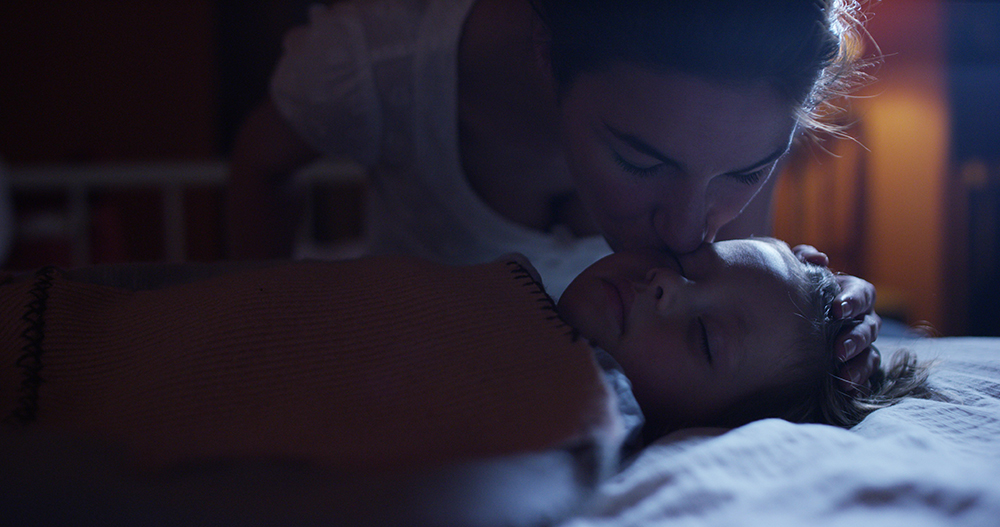This post is also available in: English

Managing your baby’s sleep is not easy. It may leave you feeling confused, anxious, frustrated and exhausted. Read this article to feel calm and confident as you navigate this phase.
Follow sleep safety guidelines:
It is most important to follow the sleep safety guidelines of the AAP (American Academy of Pediatrics).

- Place your baby on their back on a firm, flat mattress whenever they sleep.
- Ensure that their bed has no pillows, sheets, blankets, soft toys etc.
- Avoid over-clothing your baby to prevent overheating.
- Suckle your baby to sleep.
- Co-sleep if your pediatrician allows it.
Following these guidelines minimizes the chance of SIDS. SIDS or Sudden Infant Death Syndrome is the sudden unexpected death of an infant, usually while sleeping. The cause of SIDS is not known, but the sleep safety guidelines of the AAP (American Academy of Pediatrics) can minimize the chances of SIDS, so it is important to follow them.
Sleep is a developmental process:

As your baby’s brain matures they slowly develop the ability to stay awake during the day and sleep at night, stay asleep for many hours at a time and fall asleep independently. Babies are incapable of doing all this when they are newborns. It takes them 3 years to develop these abilities which then allow them to sleep like adults. They sleep in short cycles and wake up after each sleep cycle. We must help them to bridge their sleep cycles, if we want them to sleep continuously for a few hours at a time.
Milestones in sleep patterns:

Newborns sleep almost all day and clock 16 to 18 hours of sleep in a 24-hour period.
By 4 months, babies take 5 daytime naps, and sleep approximately 10 hours at night. They don’t wake up frequently due to hunger, because by this age they can take larger feeds. They can sleep for several hours if they are soothed when they start waking up.
At around 8 months, babies shift to 2 or 3 daytime naps and sleep approximately 10 hours at night. The additional calories from solids ensure that they don’t wake up due to hunger. However, they still require soothing to bridge sleep cycles so they can sleep for longer.
At around 15 months, babies start taking one long daytime nap and sleep approximately 10 hours during the night. They still need soothing between sleep cycles to sleep continuously.
During the above sleep pattern transitions, babies may be cranky and clingy. Be patient.
Sleep challenges in the newborn period
You may face the following challenges:
- Your newborn sleeps during the day and stays awake at night. This means you have to stay awake at night too.
- Your baby wakes up frequently. This means that you have to keep waking up to suckle or rock your baby to sleep.
- You have to work really hard to help your baby fall asleep. It may sometimes take your baby hours to fall asleep.

How to Navigate Newborn Sleep Patterns
- Watch out for sleep cues like looking away and looking blank and start rocking or nursing your baby to sleep.
- Never leave your baby to cry until they fall asleep. Soothe them when they cry by suckling, rocking or walking.
- Follow an early bedtime. Coincide bedtime with sunset if possible.
- Follow a calming bedtime routine. Give a relaxing massage, a warm bath and breastfeed while singing a lullaby.
- Keep the environment dark and quiet.
- Check with your doctor if you can practice co-sleeping so that both of you get more sleep.
Sleep is as important as food. Your baby’s physical growth, mental development, emotional regulation and robust immunity are all dependent on sufficient sound sleep. Prioritise sleep.
By
Dr. Debmita Dutta MBBS, MD

Dr Debmita Dutta MBBS, MD is a doctor, a parenting consultant, a content creator and the founder of What Parents Ask. She conducts online and offline workshops on parenting for schools and corporate organisations. She also conducts online and offline prenatal and infant care classes. She is a well-known thought-leader in parenting and an expert on play, learning and eating habits. She is frequently quoted in national and international publications of repute for her empathetic and compassionate approach and her application of physiology and neuroscience to parenting.
This post is also available in: English







